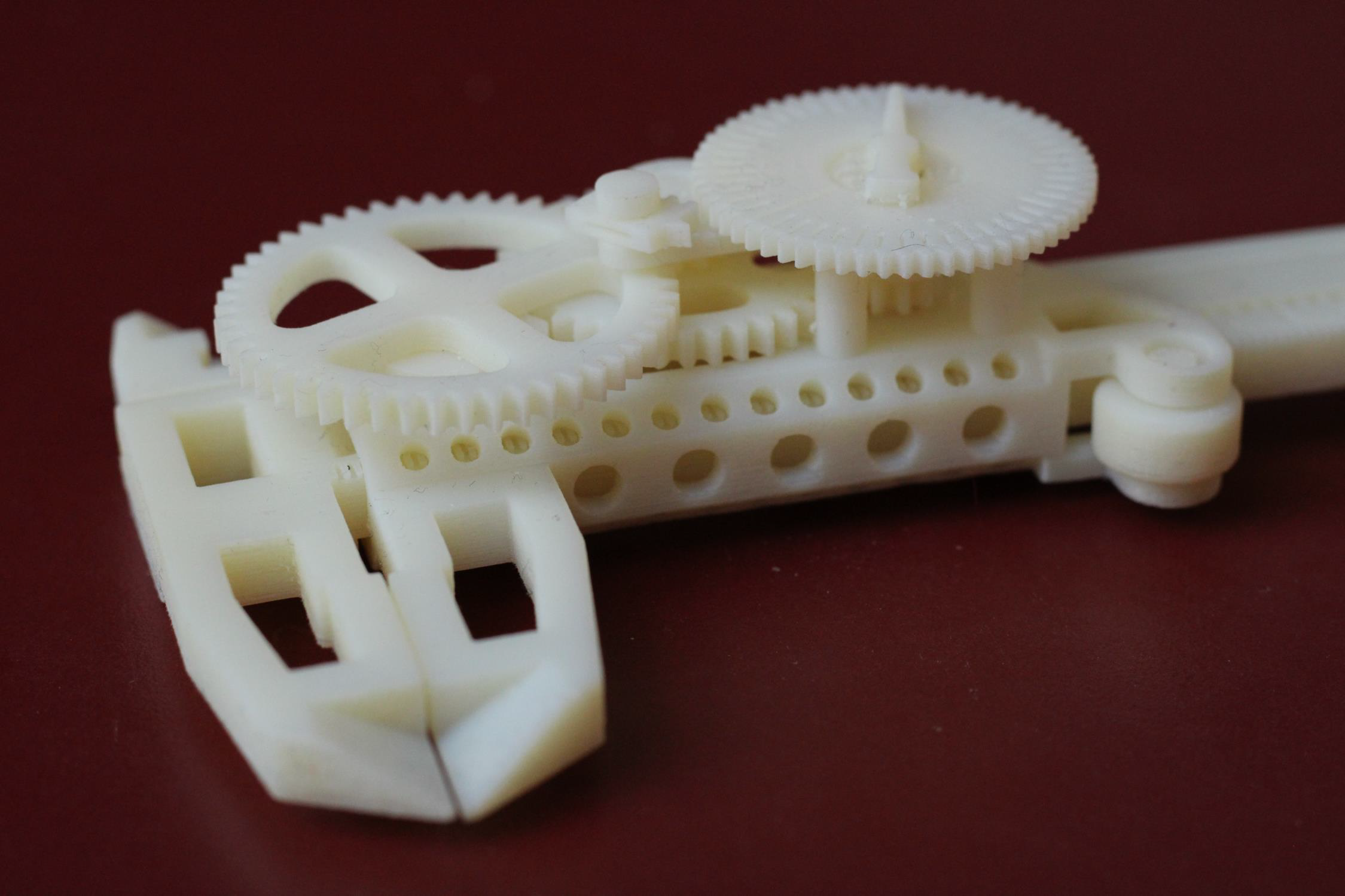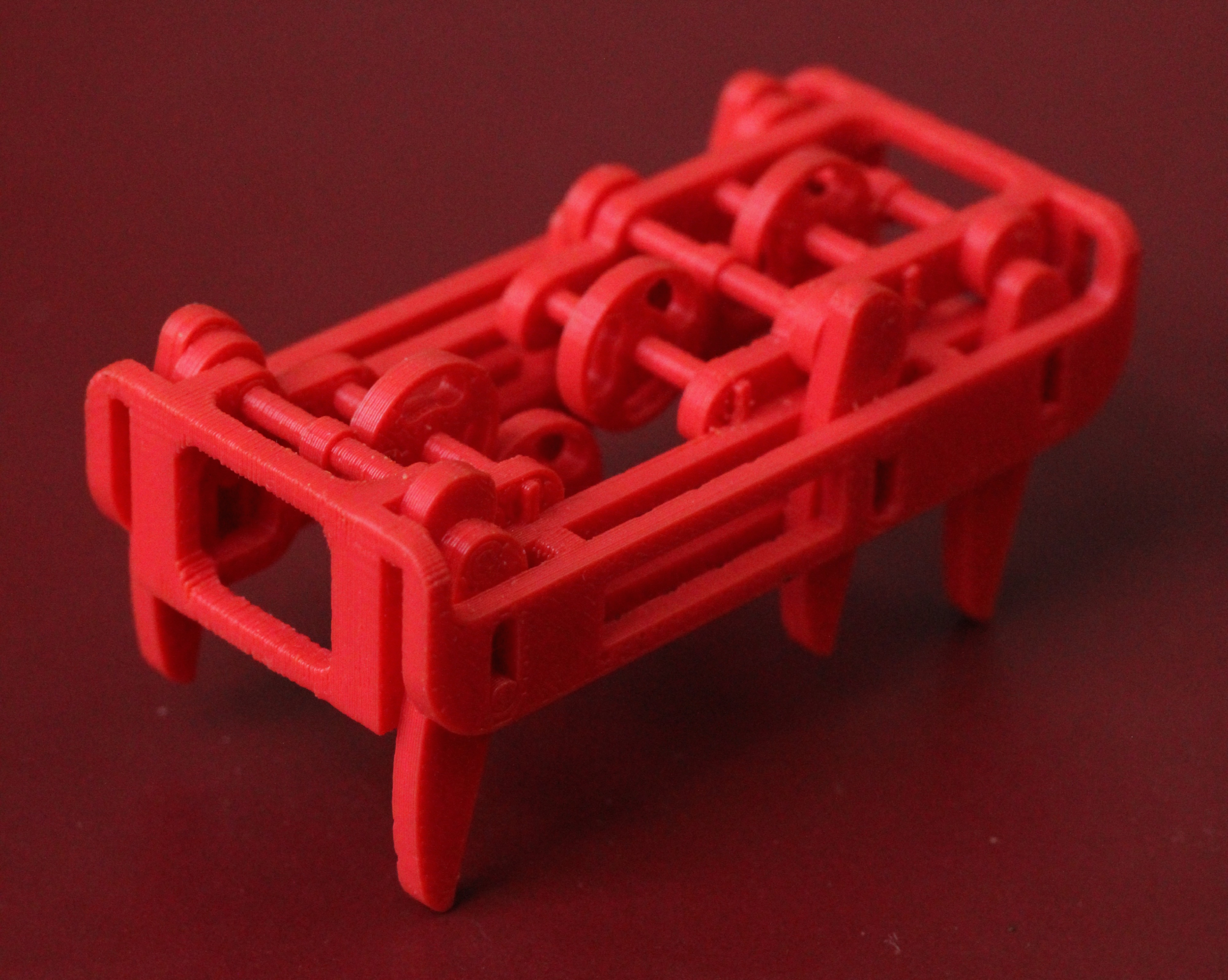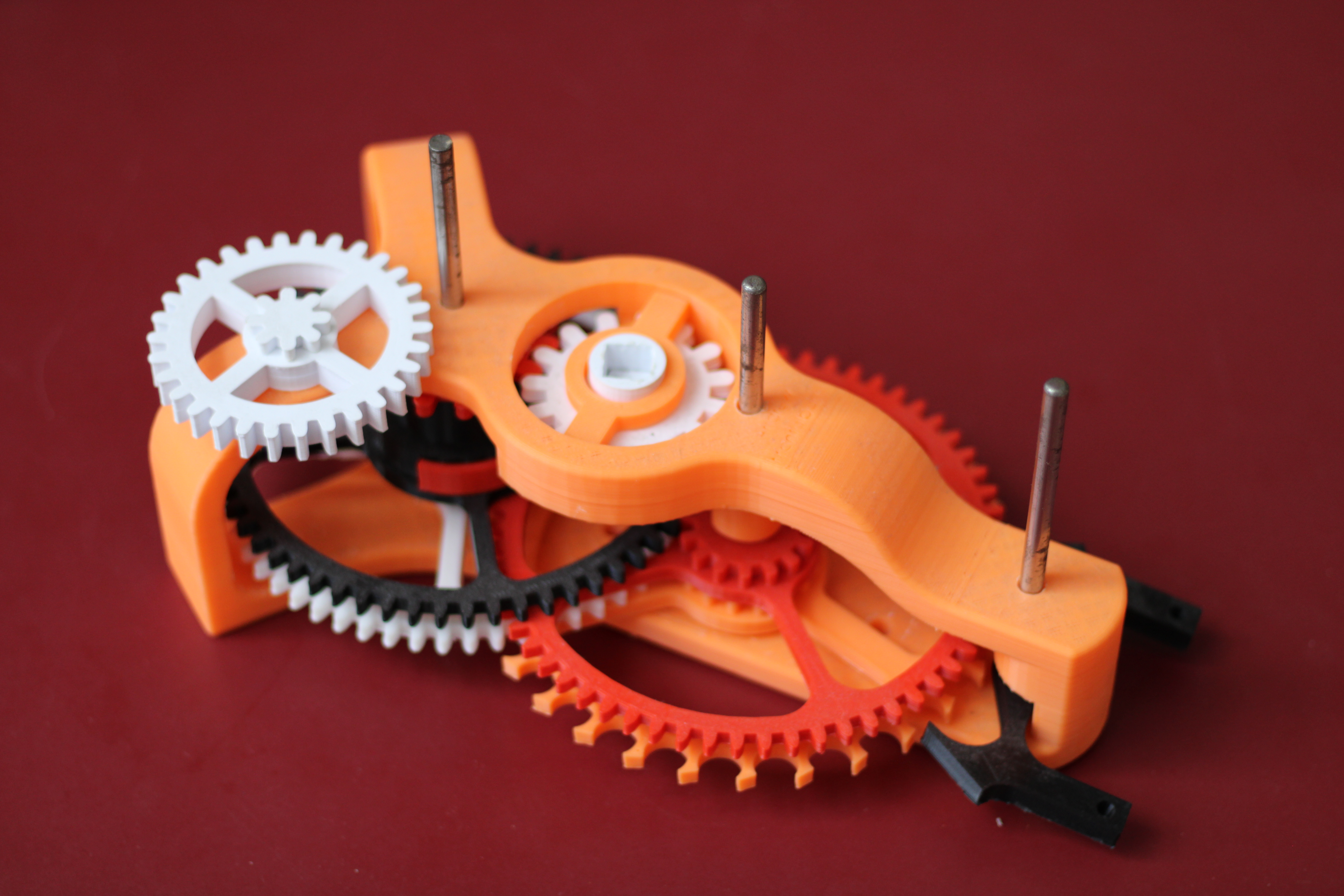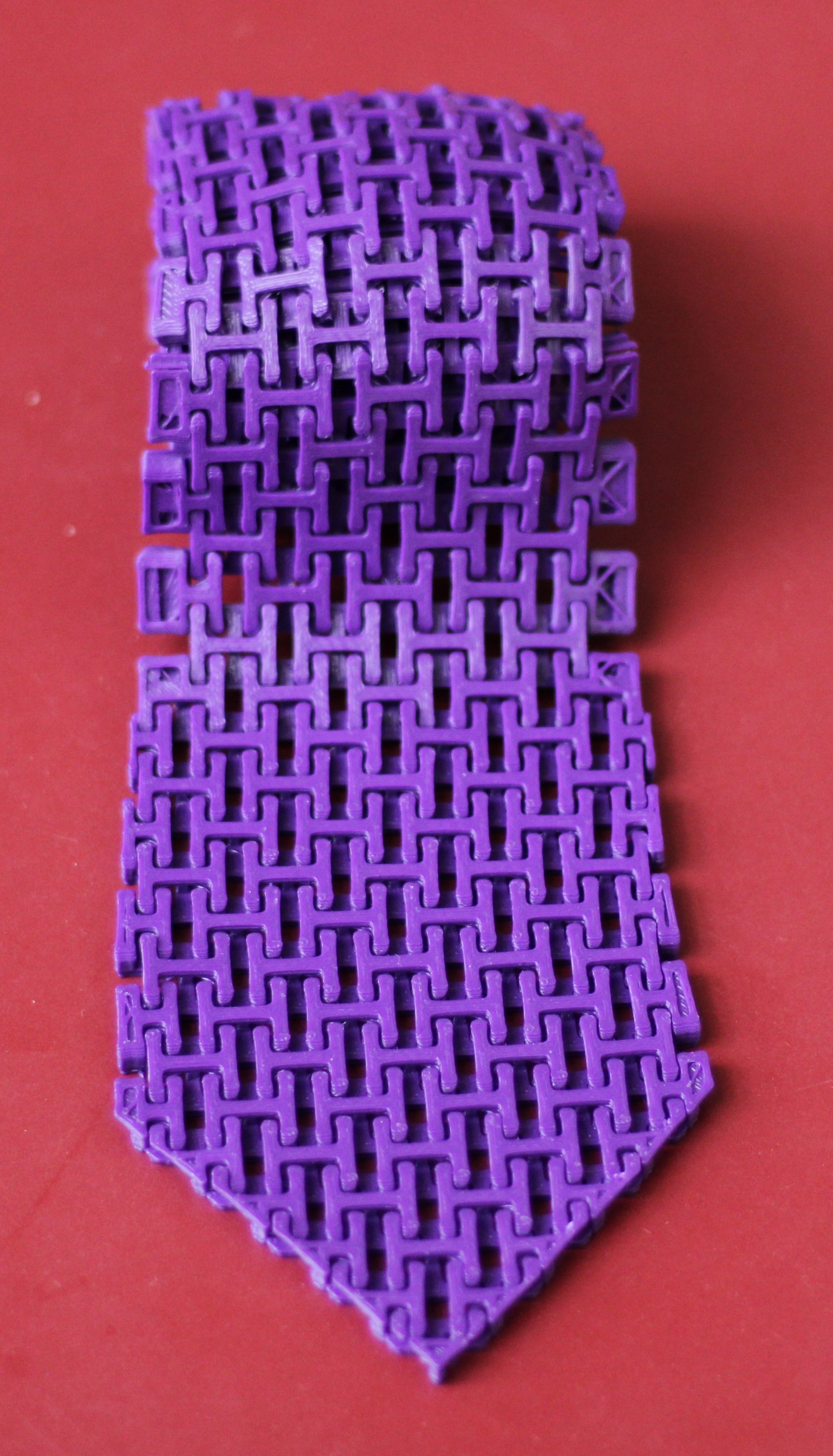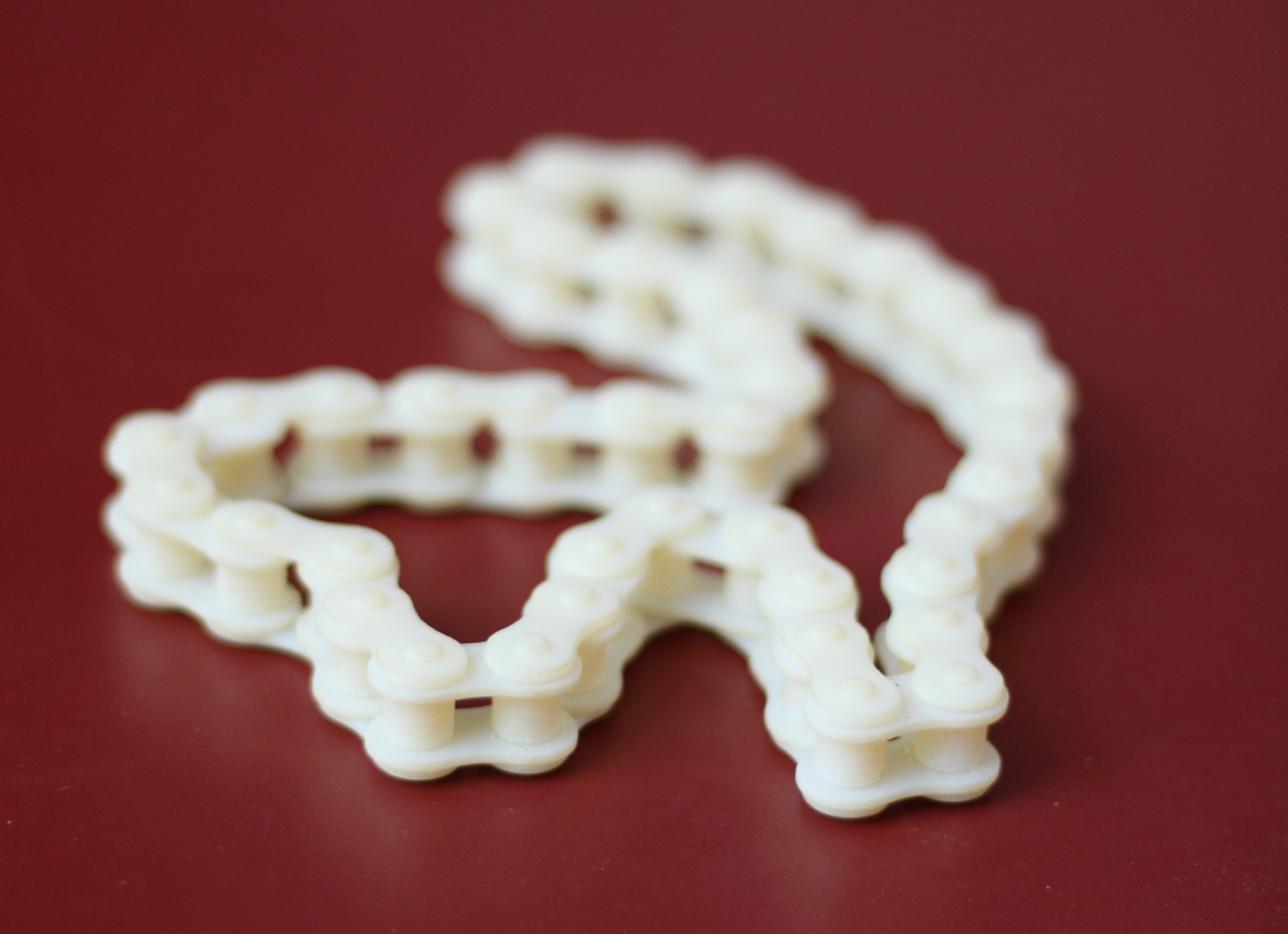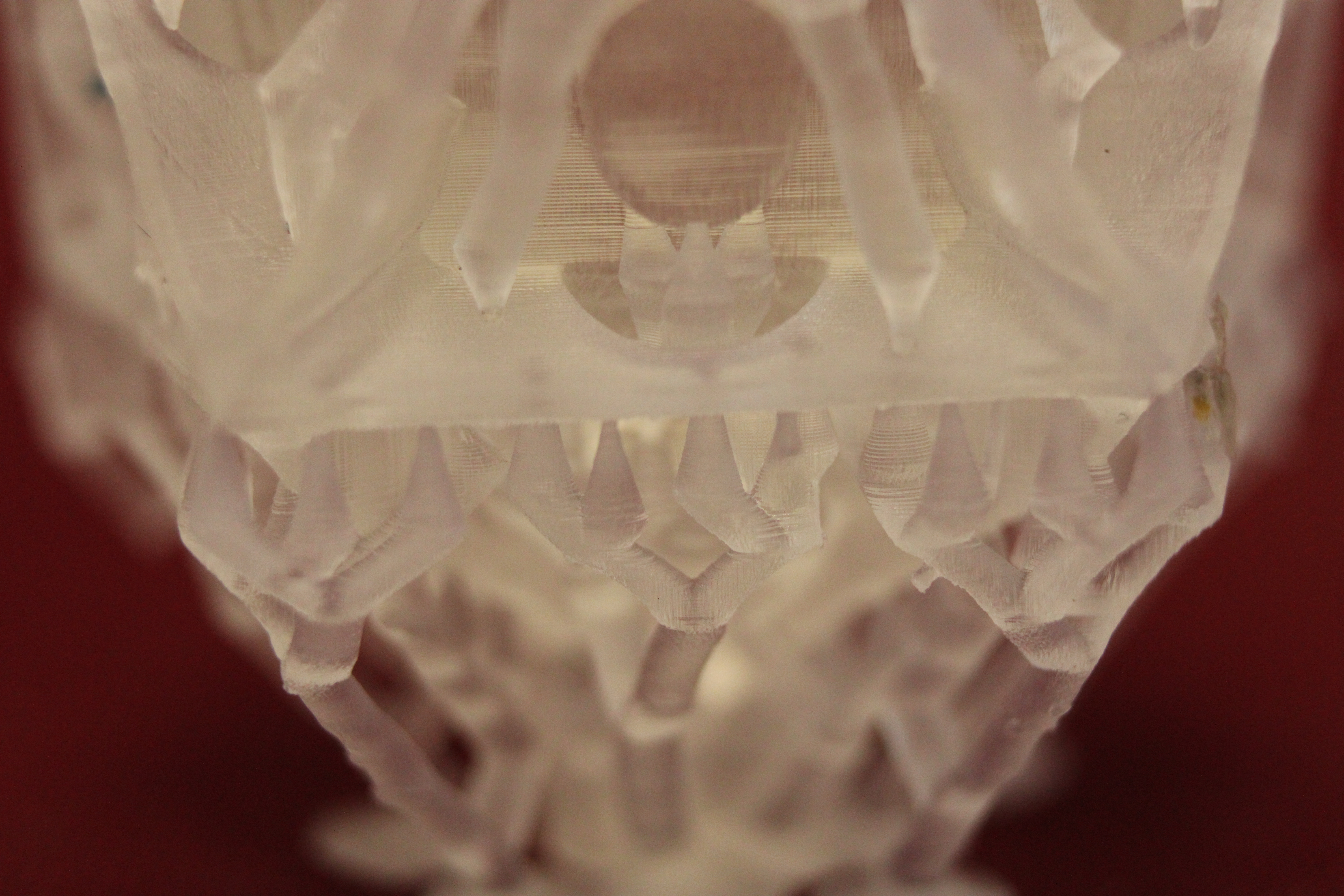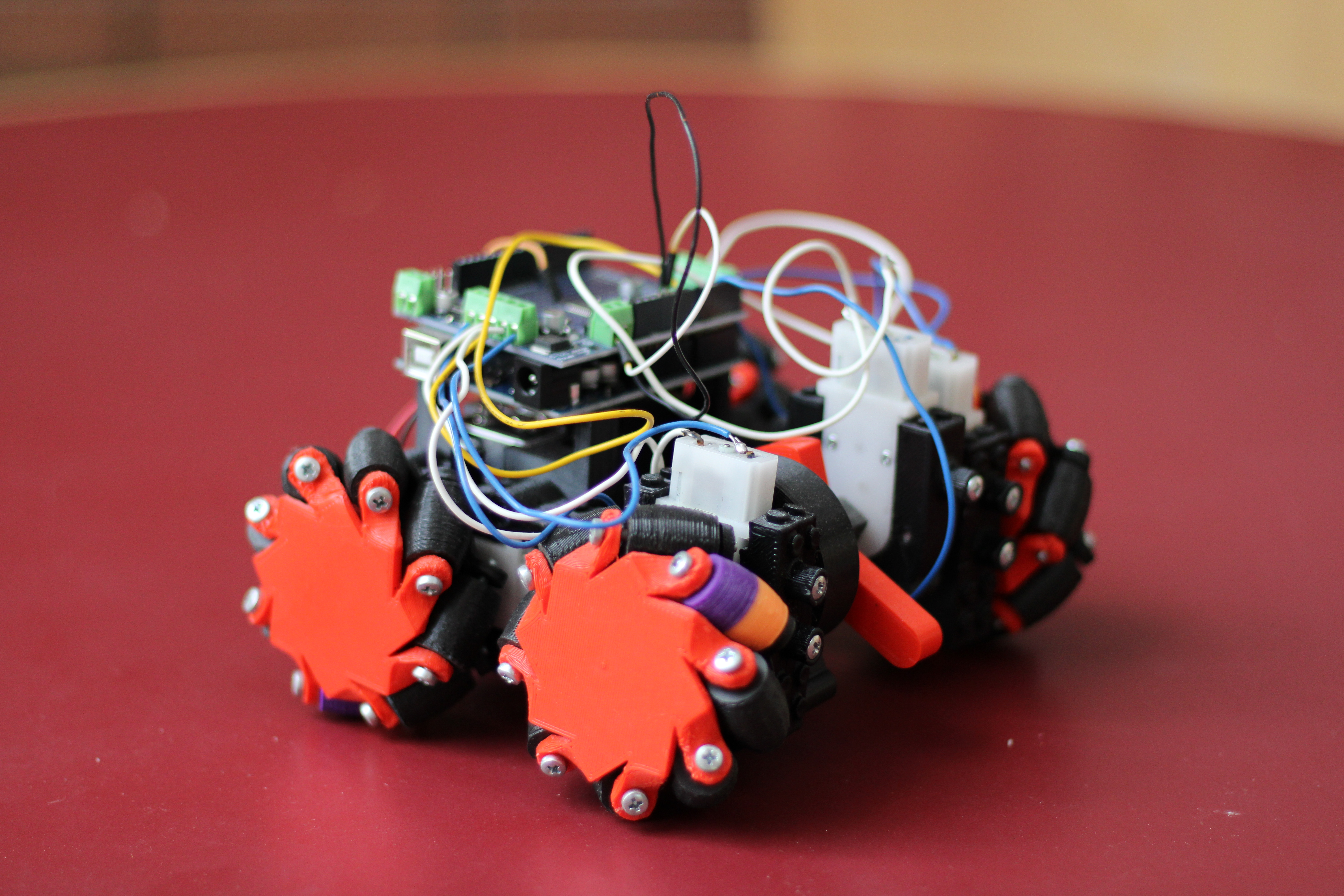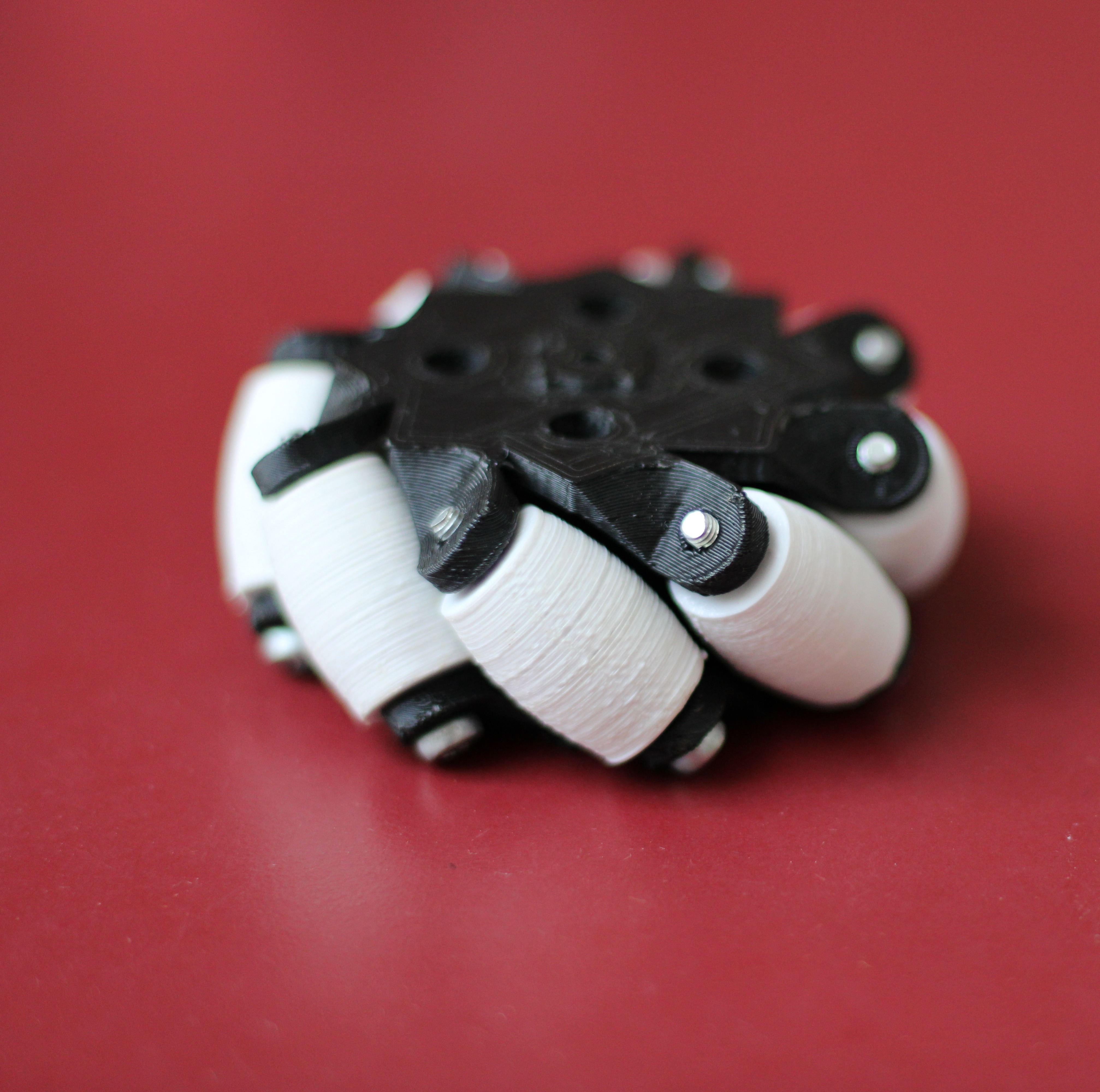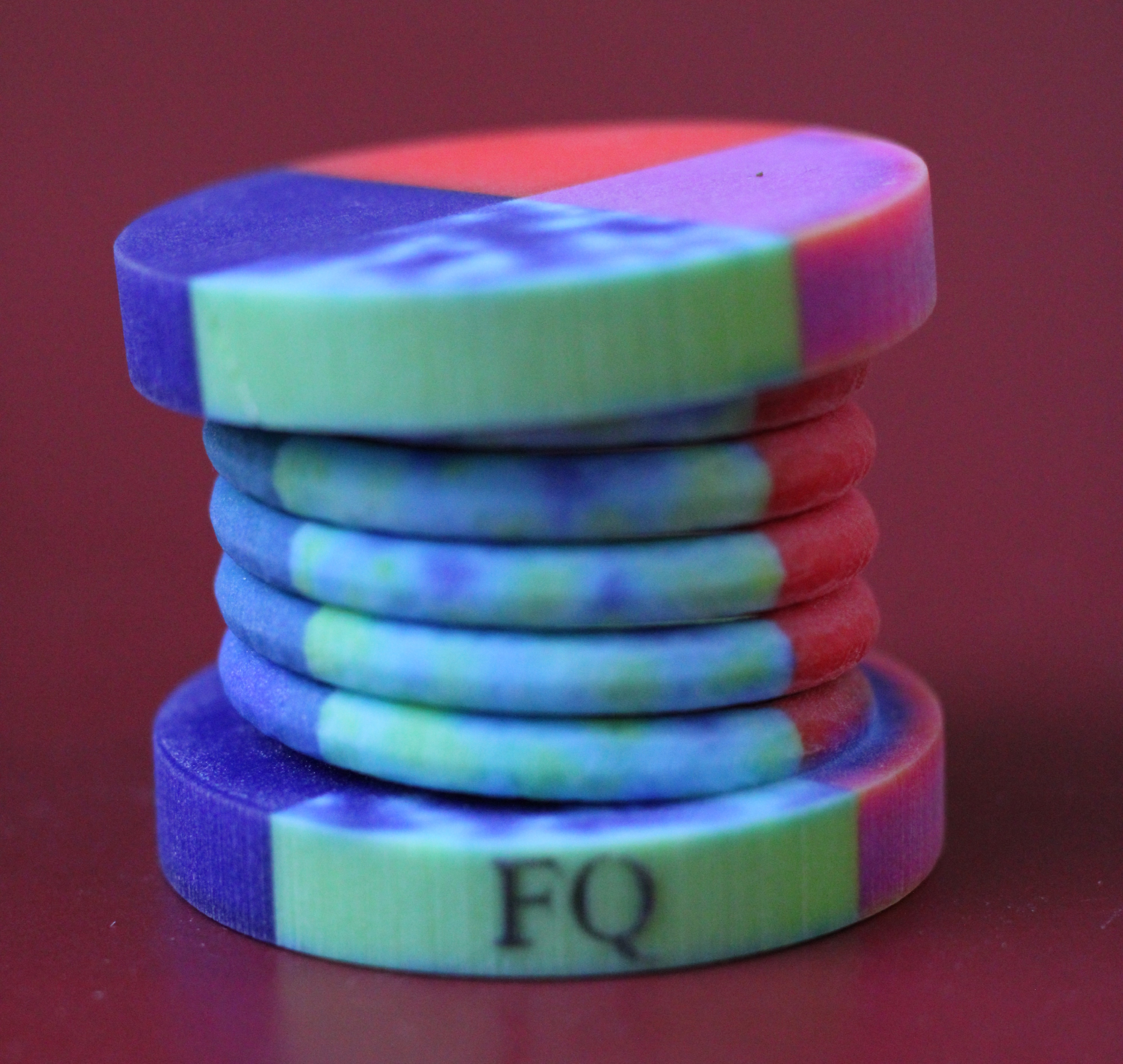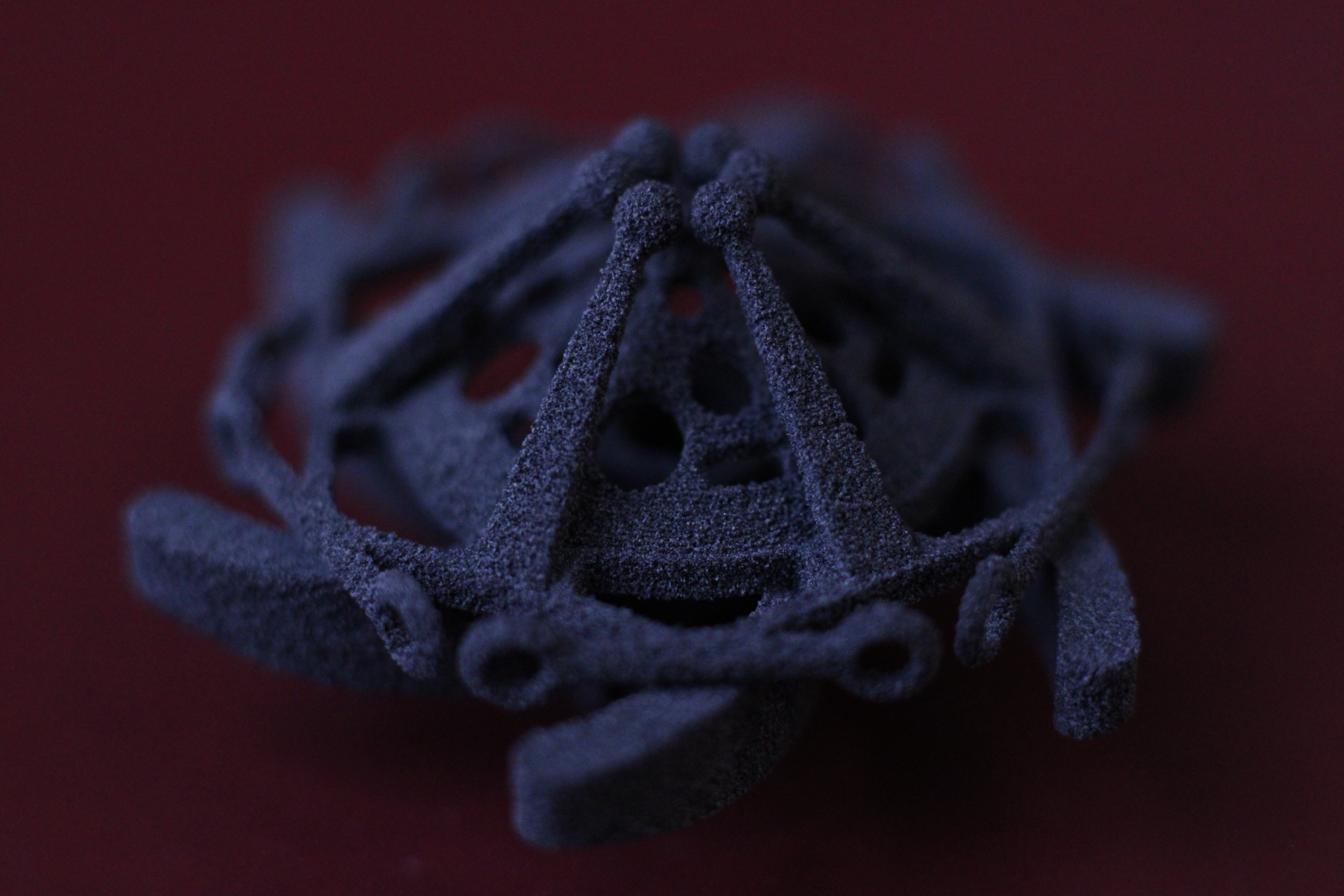3D Printing Examples
I enjoy designing objects, and 3D printing offers an easy way to realize such designs. Here is a set of interesting designs to showcase the breadth of my design/printing experience. Each of these models were created in SW.
Vernier Caliper
Likely the most complex object I’ve designed and printed, this caliper was printed in a single part, and had a tolerance of 0.03mm compared against a measuring cube. You can read more at its own page
Finger-Powered Robot
One of the very first designs I ever made was a small finger-powered robot. Using your finger, you can roll the circular sections to move the feet of the robot to make it walk. This bot is very small, and only needs 1 cubic inches of material to print.
Clock
Another complex mechanism I made was a grandfather clock, with the body shown below. This was fairly accurate, but remarkably loud due to its hollow construction
HI-Tie
Printable Fabric is a relatively niche, but interesting, subcategory of printable things. This is one of the tie’s I made, and uses a pattern I call HI, where cells of the fabric resemble a H connected vertically to an I.
Bike Chain
Another print in place part I designed was a simple bike chain
D20 Dice
You can never have enough dice. But, to help rectify this issue, I designed a set of printable dice, with a D20 shown here. These were originally designed in SW, and have cavities and channels to make material removal easier. These effect the moment’s of inertia of the dice, and thus their fairness, so each dice was optimized to minimize the deviation between the moments of inertia in the 3 cardinal directions.
The supports of these dice were then generated using my slicer . A zoomed in image of how the supports connect to the dice is shown below.
The dice wasn’t printed with faces, and instead lego studs with numbers are attached to the dice.
Robot
As part of an outreach program, I designed a robot that plays soccer, with the bulk of the robot being 3D printed. This robot has omni wheels, and a small foot in the center to ‘kick’ the ball.
The wheels of the robot are omnidirectional wheels. While originally designed to be printed as a single part, the cross axles of the proved to be too frail and were replaced with bolts.
Ansys Spring
Using Ansys, a FEA tool, the deformed geometry was extracted from memory alongside its various KPIs. These were then used to create an .obj, which was printed. The colors shown below are the deviations in the stresses as a result of numerical error.
Ansys Spring
To push our SLS machine to its max, I scaled one of our test prints to be the smallest our machine would allow before detail would be lost, resulting in the print below. The grains shown in the image are about 60um.
Metal
Due to the sensitive nature of my metal experience, I am unable to provide examples printed from metal. But I have worked on/with EBM, SLS, and DED, and have been subjected to USW.
